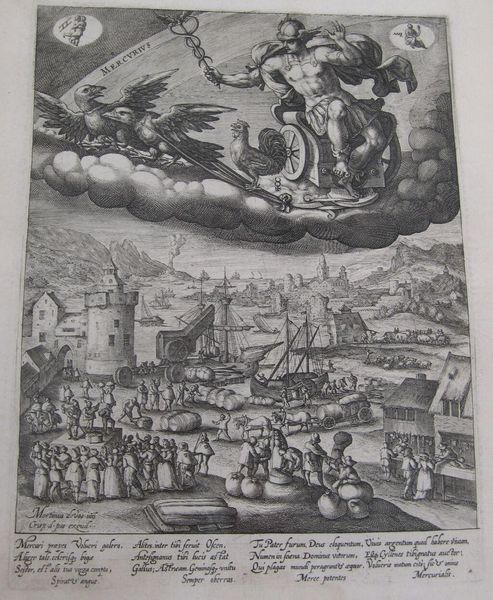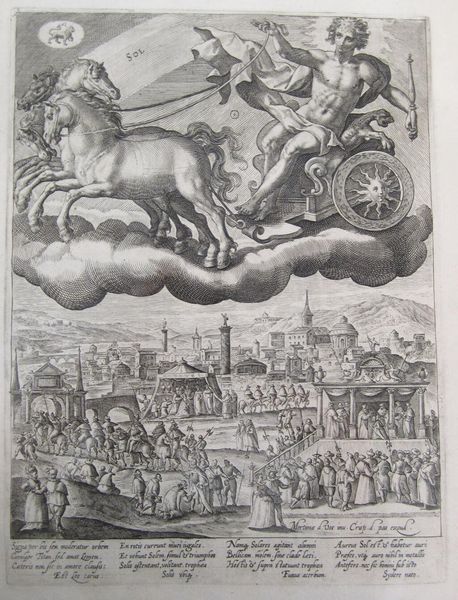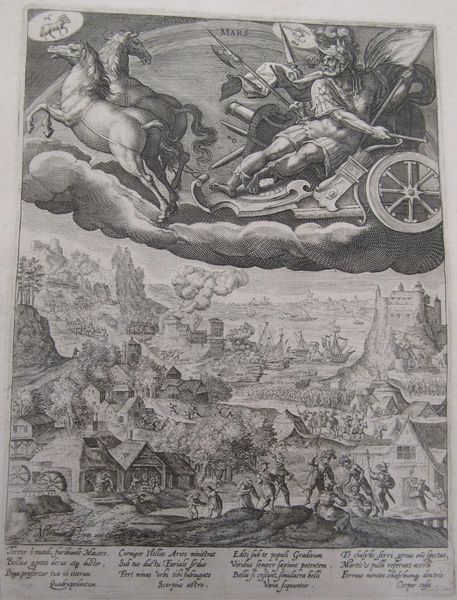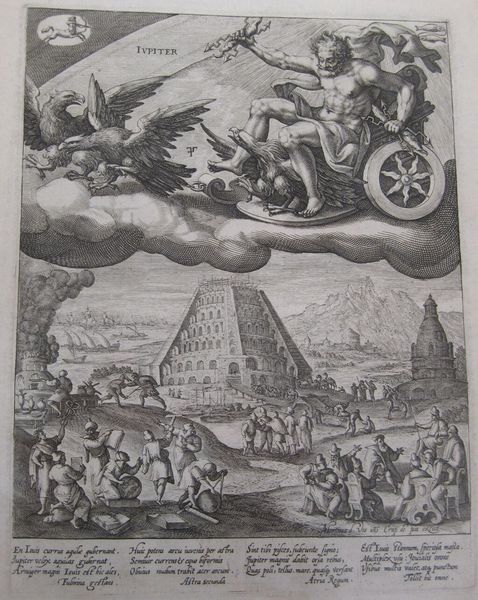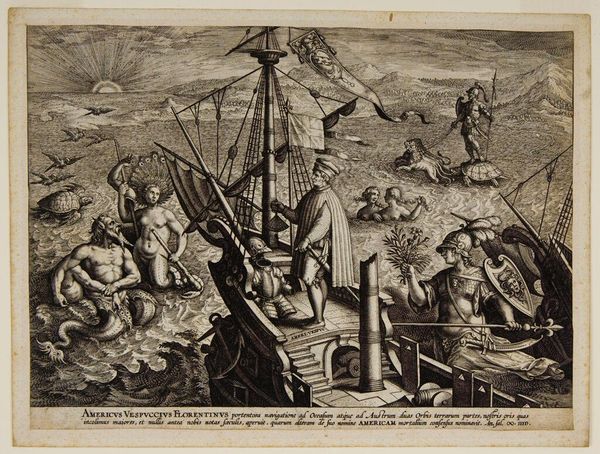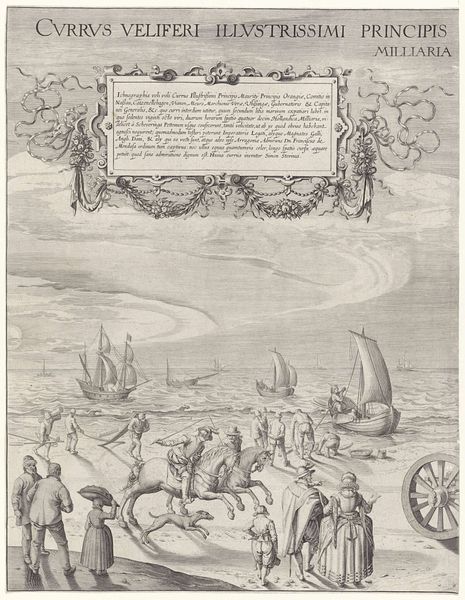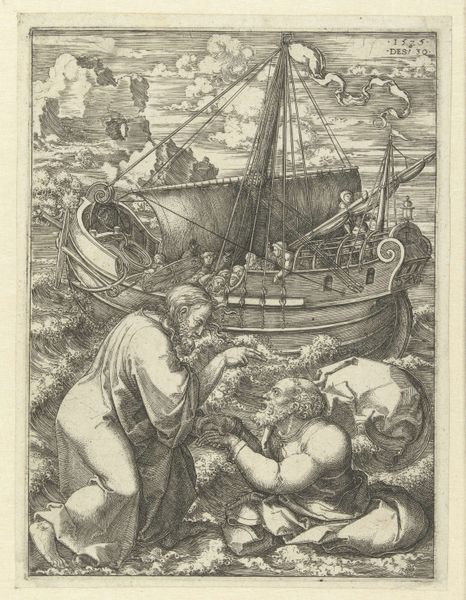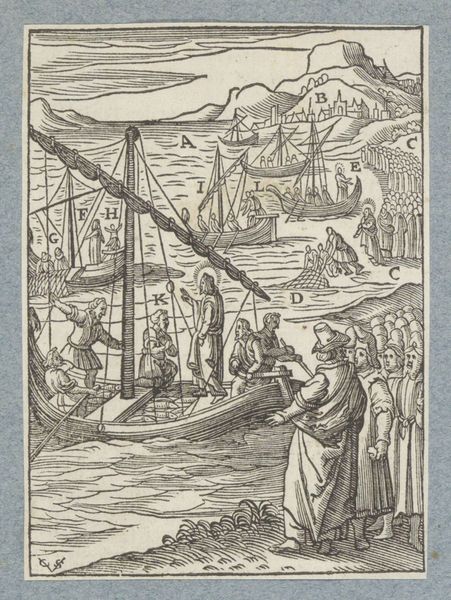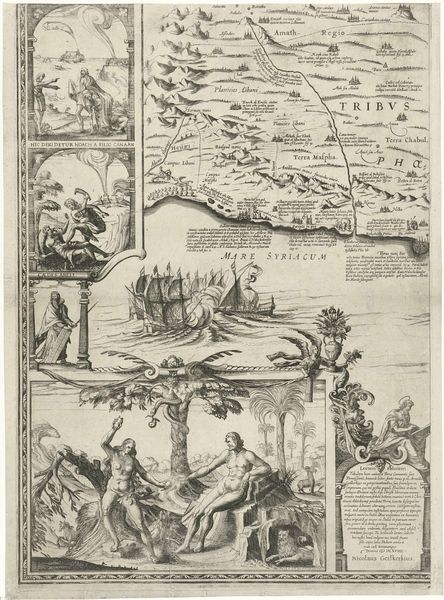
Dimensions: plate: 24.5 x 18.7 cm (9 5/8 x 7 3/8 in.) sheet: 32.4 x 23.7 cm (12 3/4 x 9 5/16 in.)
Copyright: CC0 1.0
Editor: This is "The Moon" by Crispijn de Passe, made sometime around the late 16th or early 17th century. It's a detailed print, and I'm struck by how it juxtaposes the celestial with the terrestrial – the moon goddess overlooking a bustling harbor scene. What do you see in this piece? Curator: I see a potent commentary on power and influence, framed within the context of its time. The moon, often associated with femininity and cycles, literally presides over a scene of commerce and labor. It suggests a link between the lunar cycle and the rhythms of daily life, but also alludes to the patriarchal structures influencing those rhythms. The goddess's detached gaze raises questions about who benefits from this system and who is exploited. Editor: That's a fascinating point. I hadn’t considered the power dynamics at play. Curator: Consider how classical imagery was often used to legitimize social hierarchies. Does this print reinforce those hierarchies, or does it subtly critique them by placing the goddess in a position of detached observation? Editor: I hadn't thought about it that way. It’s making me rethink the whole composition. Thank you!
Comments
No comments
Be the first to comment and join the conversation on the ultimate creative platform.
